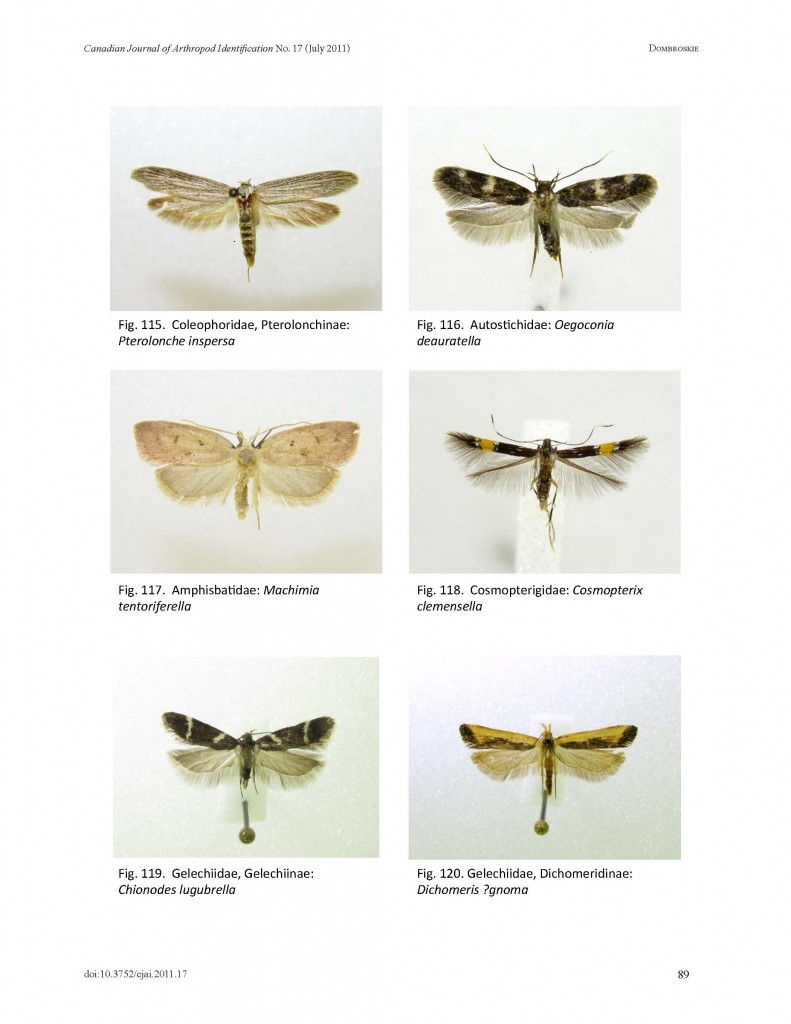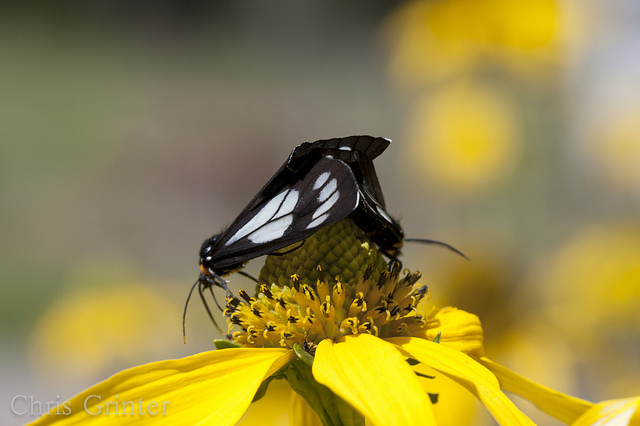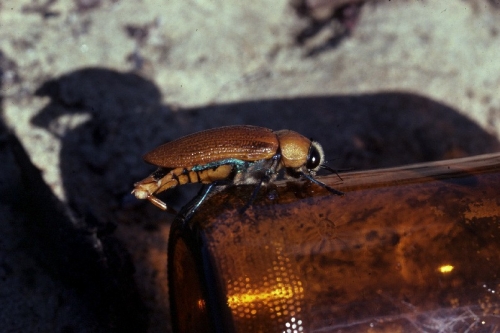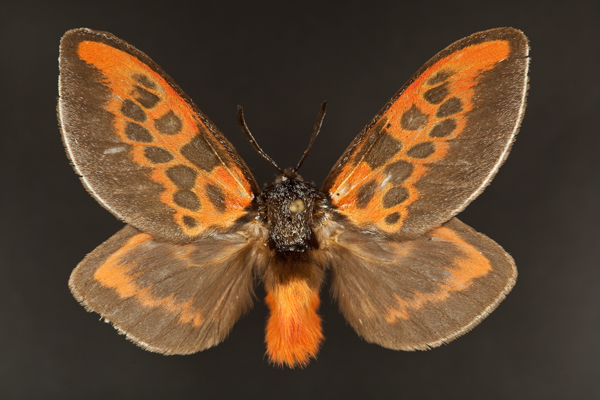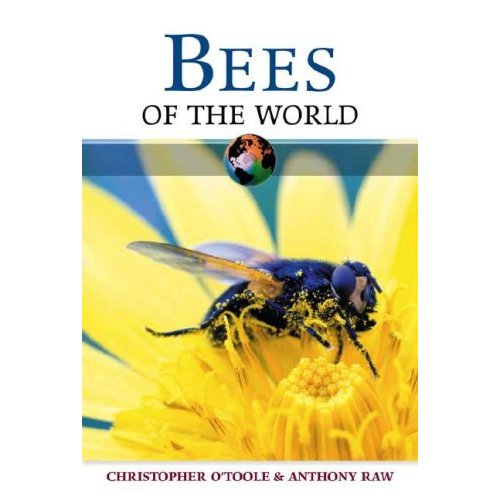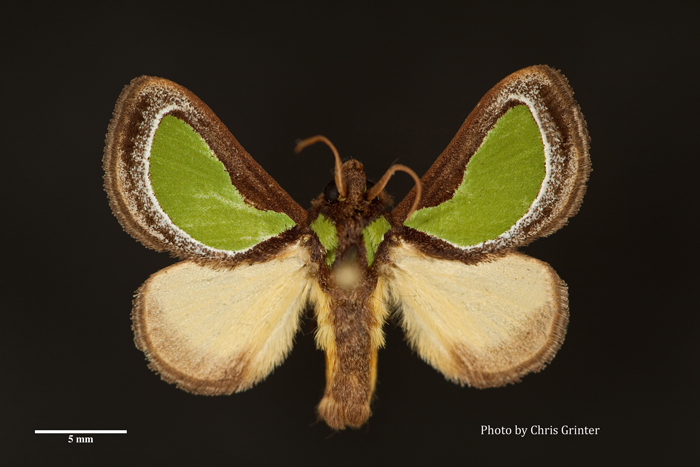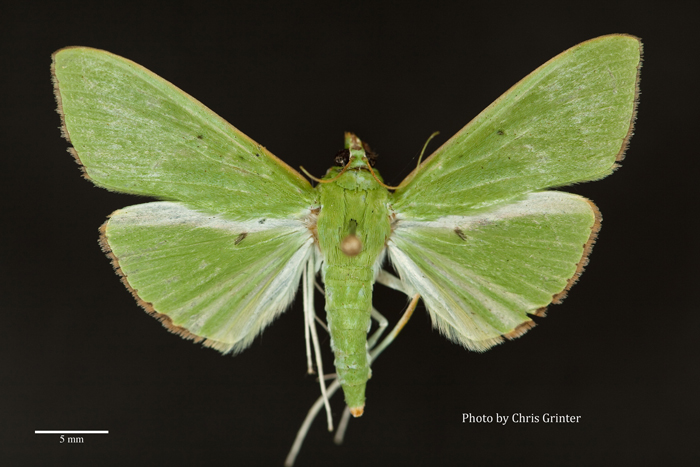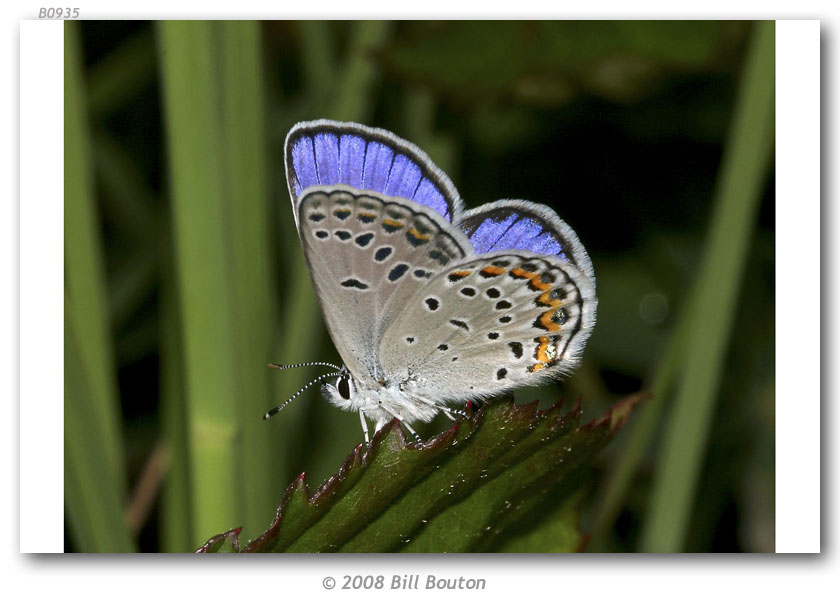Некалькі месяцаў таму цудоўны ключ да чешуекрылых Канады (усе яны) быў апублікаваны Джэйсан Дамброскі – аспірант з U. Альбэрты. Праграма даступная для карыстальнікаў Windows толькі таму я не меў добры шанец даследаваць яго яшчэ – але PDF даступны ў Інтэрнэце і ахоплівае той жа матэрыял. Усе вядомыя канадскія лускакрылыя ўключаны ў гэты ключ, і большасць з іх ахопліваюць падсямейства ці нават племя! Ёсць 222 таксонаў, 73 персанажаў і 266 станы характару, якія дапамагаюць звузіць рэчы. Гэта першая даведка такога роду, якая дакладна і поўна ахоплівае фауну ўсёй краіны, і першая, у якой выкарыстаны добра ілюстраваны і інтэрактыўны ключ. Дзіўна, наколькі добра вядомыя лепсы, але як мала добрых спасылак, амаль ні адзін з якіх не мае прыдатнага для выкарыстання ключа. Для ўсіх, хто з усіх сіл ідэнтыфікаваў лепсы раней, гэта будзе неверагодна карысным рэсурсам. Вядома, Ёсць верагоднасць некалькі амерыканскіх молі, якія могуць кінуць ключ у паток рэчаў, але па вялікім рахунку сумняваюся, што праблем будзе шмат.
|
У панядзелак молі з'яўляецца Arctiinae, Gnophaela vermiculata. These beautiful day flying moths were abundant on yellow Helianthus flowers around 9000′ ў Санта-Фе Нацыянальны запаведнік, Нью-Мексіка. Гусеніцы сілкуюцца званочкаў, але дарослыя аддаюць перавагу высокую якасць крыніца нектара ў галіне – which fortunately makes for easy and attractive photo subjects. Сёння спаўняецца сумны дзень у гісторыі фізікі, то Tevatron accelerator at Fermi Lab in Batavia Illinois was powered down for the last time. Пасля таго, як другі самы магутны паскаральнік ў свеце (і самы магутны ў ЗША), the new БАК has made this beautiful machine obsolete. I can only assume the teams of scientists working at Fermi were hopeful for further funding, but the grand ol’ days of big-budget physics was crushed by congress in 1993 with the cancelation of the SSC. Off to Europe our physicists go! I have many fond memories of visiting Fermi with my grade school science class. Every year Mr. House would take us to explore the physics and nature surrounding the lab. I recall a feeling of privilege when you visited a real working lab where there were no public displays with cute goggly-eyed atoms, just chalk boards full of Feynman diagrams and 3 day old cups of coffee. But it was probably the fully restored big bluestem prairie that grew on and around the 4 mile collider ring was where I had the most fun and is what left a lasting impact on my scientific career. And so it goes, the evolution of science in the US. I have noticed this particular trend: 1) An active science facility with lots of research has a tiny museum for public tours. 2) The research loses funding and the tiny museum takes over. 3) The museum is renovated to be more “сям'я” friendly and “interactive”, while science is pushed into the basements. 4) Whatever scientists are left (or students hired to act like scientists) are put under glass for the public to watch like strange creatures; all while true research fades into memory. The 2011 Ig Nobel ceremony took place yesterday at Harvard’s Sanders Theatre. Прэмія праводзіцца пры фінансавай падтрымцы неверагодных даследаванняў, арганізацыя, якая збірае займальны, дзіўны, і адкрыта вясёлы навуковыя артыкулы, што пераможа ідэя, што не ўся навука сумная. Among this year’s distinguished recipients was fellow entomologist and blogger David Rentz, who received the IgNobel in Biology for a discovery made in 1983 with colleague Darryl Gwynne in the Australian outback. Much to their surprise a certain style of brown bottle with indentations at the base (“stubbies”) proved to be irresistible to males of the Buprestid beetle
Congratulations Dave and Darryl!
[youtube kZyIN23Cy4Y 480 360] Мікраскапічны свет насякомых вельмі адрозніваюцца адзін ад нашага, і мы рэдка даюцца пробліскі ў ім. Thanks in part to the impressive Phantom camera system and the Flight Artists project researchers have filmed the minute (1мм!) Trichogramma wasp (Chalcidoidea) ў палёце. These insects are egg parasites of Lepidoptera (amongst other groups undoubtedly) and can be used as effective biocontrol agents. As you’ll see in the video it’s been long understood that these wasps hitchhike on adult Lepidoptera waiting for fresh eggs, but it wasn’t know how they got there and if they were even flying onto the adult hosts. Stunningly, this wasp flaps its wings at ~350 times per second to achieve some astounding feats of movement. The biomechanics of this wing mechanism must be fascinating. Scroll ahead to 1:07 and watch the interaction of the two wasps – the one that flips off to the left of the screen moves in such a bizarre way it looks like bad CGI. I sure hope they record more species of minute flying insects!
У панядзелак молі з'яўляецца ашаламляльным самка Неотропической Megalopygidae – Trosia nigrorufa. Эд Рос і Ev Schlinger сабралі гэтую ўзору ў Перу ў 1955, і я чуў шмат гісторый пра гэтых эпічных экспедыцый. Я не магу ўявіць падарожжа праз сухагруза, being gone for six or more months at a time and relying mostly on hand written correspondance. It must have made the world feel like a much larger place than it is today. This is a pretty epic fail. Я мяркую, што “малады паўналетні” Выданне кіруючыя прынцыпы з'яўляюцца менш строгімі з “дадзеныя”.
Thanks to Richard Lee Brown for first posting this on Facebook.
Мы ўсе бачылі, у гэты дзень ідзе, рост матылькоў, дзень, калі яны будуць помсціць нам. Не будзе больш яны пасіўна лётаць вакол месцаў іх пражывання, паколькі яны бульдозерамі для гандлёвых цэнтраў і забруджаныя сцёкі. Адзін асабліва раззлаваны Karner Blue прадставіў ліст да Цыбулі папярэджваючы нас, што наш час скончыўся. Маленькія Lycaenidae, якія знаходзяцца пад пагрозай знікнення, возьмуцца за рукі і пойдуць за намі ціхай ноччу, пакуль мы спім у сваіх ложках. Мы ў Лепідоптэрысты’ Грамадства нават склала свой спіс за непрыняцце мер. Мы павінны дзейнічаць разам, пакуль не позна – давайце прэвентыўна нанясем удар перад ростам блюзу. Ратуйце свае сем'і! Спаліце гэтыя ёмістасці з пенаполістырол, пракласці прэрыі, кіруйце сваімі пазадарожнікамі і займіце пазіцыю супраць гэтых пырхаючых фанатыкаў! (ці мы маглі б проста выратаваць іх…) There has been a continuing discussion over the last few years of why so few women remain in science. While I’m not going to dive into that topic here, you can find great discussions тут, тут, тут і тут. I don’t however think anyone argues about why women don’t enter science in the first place, especially when you see things like this. Way to print that soul crushing stereotype right on the front of your daughters shirt, JCPenny. (праз Skepchick) |
Скептыцызм |
